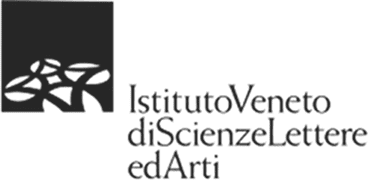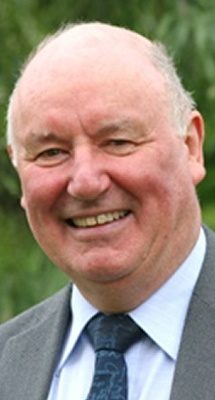1. ACADEMIC APPOINTMENTS 1970.80: University Lecturer, Department of Physics, University of Cambridge.
1971-80: Official Fellow. Clare Hall, Cambridge: Praelector of Clare Hall, Cambridge. 1980-90: Astronomer Royal for Scotland, Regius Professor of Astronomy, University of
Edinburgh, Director of the Royal Observatory, Edinburgh.
1991 to present: Jacksonian Professor of Natural Philosophy, University of Cambridge. 1991-97 Deputy Head of Cavendish Laboratory
1997-2005 Head of Cavendish Laboratory.
1991 to present: Professorial Fellow of Clare Hall, Cambridge. Vice-president 1993-2002.
Visiting Professorships: California Institute of Technology (Sept-Dec 1972); Exchange visitor to the USSR Space Research Institute, Moscow on 6 occasions (1975-79): Institute for Advanced Study, Princeton (Sept-Dec 1978): University of Victoria. Canada (March 1988); Regents’ Fellowship of Smithsonian Astrophysical Observatory, Harvard University (Apr-July 1990). Space Telescope Science Institute, Baitimore (Sept-Dec 1997), Erskine Fellow, University of Canterbury, Christchurch, NZ (Sept-Oct 2005), Adjunct Professor of Astrophysics. University of Massachusetts at Amherst (Feb-May 2006), Visiting Professor MPI for Astrophysics, Garching (Oct-Dec 2006). Visiting Professor ESO Garching (Feb-March 2007).
2. SOCIETIES, HONOURS, PRIZES, ETC1967: Royal Astronomical Society, Fellow; Council Member (1993-99),President (1996-98). 1981: Fellow of Royal Society of Edinburgh.
1982: Honorary Doctor of Law, University of Dundee.
1994: Saltire Society-Royal Bank of Scotland Science Prize.
1995: Pilkington Award for Excellence in Teaching, University of Cambridge.
2000: Commander of the British Empire (CBE) for services to astronomy and cosmology. 2000: Foreign Member of the Accademia Nazionale dei Lincei.
2004: Fellow of Royal Society of LondonOther professional bodies: Institute of Physics, Royal Institution of Great Britain, International Astronomical Union, European Astronomical Society. British Association for the Advancement of Science, Academia Europa
3. ACTIVITIES ON BEHALF OF RESEARCH COUNCILS AND OTHER UK BODIESI have served on and chaired many Committees, Boards and Panels for the Research Councils and other UK bodies. The most important of these have included.
SERC Millimetre Telescope Users Committee, Chair (1979-83): SERC Space Telescope Advisory Panel, Chair (1977-19B3); SERC/BNSC ROSAT Management Committee, Chair (1986-94); EPSRC Centra) Laser Facility Review Panel, Chair (1994); PPARC Mertin Steering Committee. Chair (1993-96); Advisor, House of Commons Select Committee for Science and Technology investigating PPARC (1996); PPARC Astronomy and Astrophysics Committee, Member (1996-99); PPARC Science Committee, Member (1996-1999); Trustee Lloyds’
Tercentenary Foundation (1996-present); Scottish Universities’Physics Alliance (SUPA). Chair of Advisory Committee (2003- present).5. MAJOR PROJECTS INVOLVING SCIENTIFIC AND MANAGEMENT LEADERSHIP
· Director of the ROE (1980-90) with responsibility for all aspects of the operations of the Observatory in Edinburgh, the UKIRT and JCMT facilities in Hawaii and the UK Schmidt Telescope in Australia.
. Enhancement of UK Infrared Telescope (UKIRT) from a tight-collector to the world’s largest dedicated fully-instrumented infrared telescope. Construction of the first infrared cameras (IRCAM 1 and 2) and spectrographs (CGS 4) involving infrared arrays for UKIRT.
· Leading the ROE effort in the commissioning and operational phases of the James Clerk Maxwell Telescope (JCMT). Management/scientific oversight of the development and construction of the submillimetre continuum bolometer array camera SCUBA for the JCMT.
· Leading ROE effort in the UK’s contribution to ISOCAM of the ESA Infrared Space Observatory.
6. OTHER INTERNATIONAL SCIENTIFIC ACTIVITIES
The most important of the many international Committees, Boards and Panels include:
Intemational Astronomical Union, President of Commission No 47, Cosmology (1973-76).
European Space Agency: Astronomy Working Group (1975-78); Space Telescope Working Group (1977-83), Space Telescope Advisory Team (1983-86), Technical Panel for the Planck Mission, Chair (1998), PLANCK ground segment readiness review, chair (2004-present), XMM Observatory Time Allocation Committee, Chair (1999- 2004).
NASA: Interdisciplinary Scientist for the Hubble Space Telescope (1977-92); Space Telescope Science Working Group (1977-92); Independent Science Reviews: the Second Servicing Mission of the Hubble Space Telescope, Chair (1996), NICMOS Recovery Program (1997), Chair. Tiger team for the JWST (2005).
Space Telescope Science Institute: Space Telescope Advisory Committee (1982-85), Chair (1983-84): Institute Visiting Committee (1983-1986); Council Member (1987-95), Chair (1995-1996). Interim Visiting Committee, Chair (1996).
International Gemini Board, (1991-95), Vice-Chair (1992-93), Chair (1994-95). Anglo-Australian Telescope, Board Member, (1982-87).
Fachbeirats of Max Planck Institute for Radio Astronomy, Bonn, (1981-86) and Max Planck Institute for Extraterrestrial Physics, Munich, (1985-92). Chair (1989-91).
Australia Telescope National Facility. Board Member (1994-96).
Frontier Research Programme of RIKEN. Japan. Council Member (1995-7)
National Science Foundation, USA. Only non-US member of the Senior Review Committee of the NSF Astronomy Program.
European Southern Observatory Member of Visiting Committee 2007.7. PUBLIC UNDERSTANDING OF SCIENCE
I deliver typically 20 public lectures each year. Highlights include:1986: Britannica Award for the Dissemination of Learning and the Enrichment of Lite. 1990: Royal Institution Christmas Lectures for Young People. The Origins of Our Universe. 1991-92: President, Physics Section. British Association for the Advancement of Science. 1995: Selby Lecturer of the Australian Academy of Sciences, Measuring the Fundamentals. 1999-2001: Institute of Physics Fellow in the Public Understanding of Physics.8.PUBLICATIONS 17 original books and over 250 scientific papers (list available on request)
LIST OF PUBLICATIONS
BOOKS
1. ORIGINAL TEXTS
B1. Observational Cosmology 1978. J E Gunn, M S Longair and M J Rees. Geneva: Geneva Observatory Publications.
B2. High Energy Astrophysics 1981. M S Longair. Cambridge: Cambridge University Press.
B3. Theoretical Concepts in Physics, 1984 (revised 1991). M S Longair, Cambridge University Press, Theoretische Konzepte der Physik. 1991. Berlin: Springer-Verlag. (German translation of Theoretical Concepts in Physics).
B4 Alice and the Space Telescope. 1989. M.S. Longair. Baltimore: Johns Hopkins University Press.
B5. The Origins of Our Universe – 1990 Royal Institution Christmas Lectures 1990. M.S. Longair Cambridge: Cambridge University Press. Editions in Japanese, French, Spanish, Italian, German, Portuguese and Finnish Nave now been published.
B6. High Energy Astrophysics: Volume 1. Photons, Particles and therr Detection. 2nd edition, 1992 (revised 1996). Cambridge: Cambridge University Press.
B7. Astronomy in the UK. 1993. Booklet written for the Royal Astronomical Society. (I wrote the complete text for this booklet.)
B8. High Energy Astrophysics: Volume 2. Stars, the Galaxy and the lnterstellar Medium. 2nd edition, 1994 (revised 1996). M.S. Longair. Cambridge Cambridge University Press,
B9. The Deep Universe – The 1993 Saas-Fee Lectures 1995. A.R. Sandage, R. Kron, and M.S. Longair. Berlin: Springer-Verlag.
B10. The Gemini Project 1995. NSF publications. (I wrote the complete text of this booklet – I was chairman of the Gemini Board in 1994 and 1995.)
B11. Our Evolving Universe 1996. M.S. Longair. Cambridge: Cambridge University Press.
B12. The Large, the Small and the Human Mind R. Penrose, with A. Shimony, N. Cartwright and S.W. Hawking (ed. M.S. Longair) 1997. Cambridge: Cambridge University Press. Paperback edition, 1999, with two additional essays by Roger Penrose.
B13. Our Evolving Universe 1998. M.S. Longair. Spanish and German editions published by Cambridge University Press (Spain) and Springer Verlag. In both cases, there were substantial revisions to the 1996 English edition.
B14. Galaxy Formation 1998. M.S. Longair. Berlin: Springer-Verlag.
B15. Astronomy in the UK, 2000. Special edition of Astronomy and Geophysics, written for the Royal Astronomical Society and PPARC (rewritten 2005).
B16. Theoretical Concepts in Physics, 2nd Edition (Revised and Enlarged Edition), 2003. M S Longair, Cambridge University Press
B17. The Cosmic Century: A History of Astrophysics and Cosmology 2006. M.S. Longair. Cambridge: Cambridge University Press.
In PreparationB18. Galaxy Formation 2007. M.S. Longair. Bedin: Springer-Verlag. (second edition). Now in press.
B19. High Energy Astrophysics: 2008. (consolidated new edition) M.S. Longair. Cambridge: Cambridge University Press (third edition).2. CONFERENCE PROCEEDINGSC1. Confrontation of Cosmological Theories with Observational Data, edited by M S Longair, IAU Symposium No. 63, Reidel and Co., 1974.
C2. The Large Scale Structure of the Universe, edited by M S Longair and J Einasto, IAU Symposium No. 79, Reidel and Co., 1978.
C3. Scientific Research with the Space Telescope, edited by M S Longair and J Wamer, NASA Publications CP-2111, 1979.
C4. Astrophysical Cosmology, edited by H Briick, G Coyne and M S Longair, Vatican Symposium Academiae Scientiorum Scripta Varia, 1982.
C5. The Physical Universe: Interface between Cosmology, Astrophysics and Particle Physics, eds. J.D. Barrow, A.B. Henriques, M.T.V.T. Lago and MS. Longair. 1991. Proceedings of the 12 Autumn School of Physics, Lisbon, Portugal, 1 – 5 October 1990.
C6. The Frontiers of Space and Ground-based Astronomy – The Astrophysics of the 21st Century, edited by W. Wamsteker, M.S. Longair and Y. Kondo, 1994 27th ESLAB symposium, 10-14 May 1993. (Dordrecht: Kluwer Academic Publishers)3. PUBLISHED SCIENTIFIC PAPERSOver 250 scientific papers in learned journals (details available on request).

